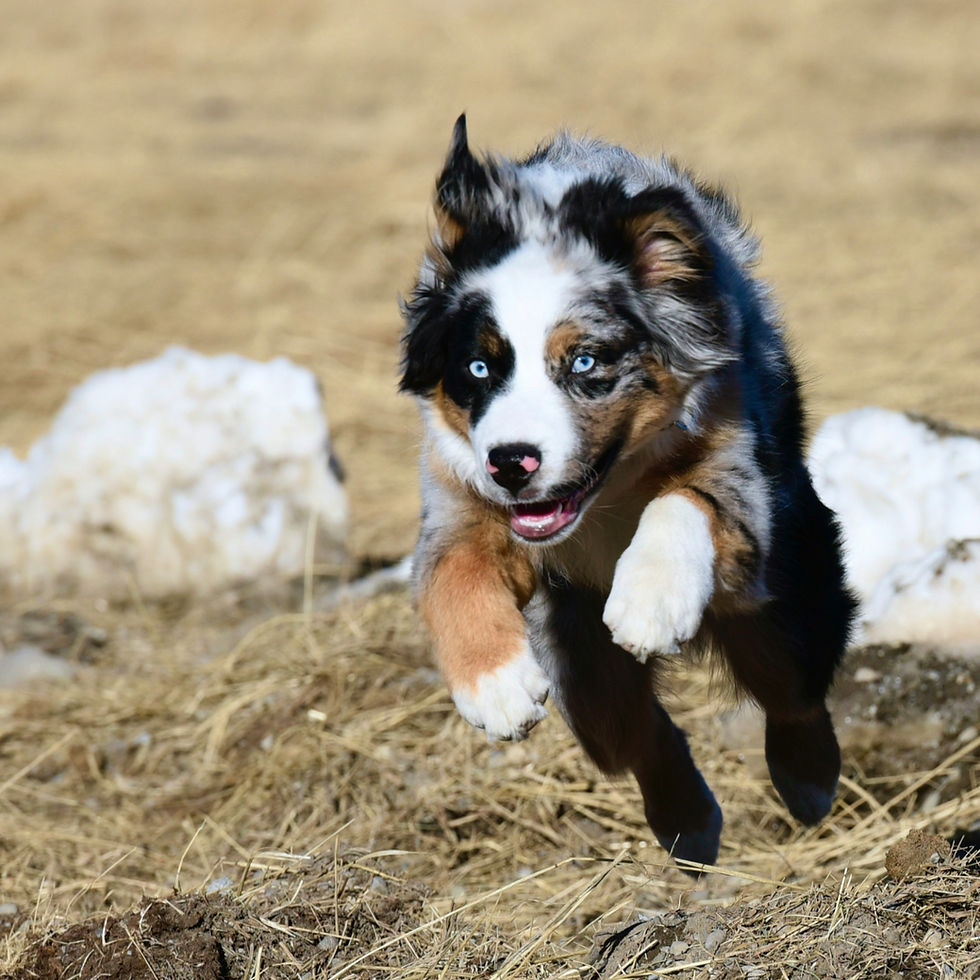How to Successfully Potty Train Your Pup Without Losing Your Mind
- Mackenzie Counts
- May 9
- 4 min read
Potty training your puppy can often feel like a challenging adventure. These energetic little furballs come with tiny bladders and an endless curiosity, which can lead to accidents around the house. But do not worry! With the right strategies, a sprinkle of patience, and a sense of humor, you can effectively teach your puppy to do their business outside. In this guide, we will explore practical tips that make potty training manageable and enjoyable.
Understanding Your Puppy’s Bathroom Needs
To successfully potty train your puppy, it's essential to grasp their unique needs. Puppies, especially those under six months, have small bladders and need to relieve themselves frequently. On average, they can hold their bladder for about one hour for every month of their age. For instance, a three-month-old puppy may need to go out every three hours. Being aware of this will help you establish an effective potty training schedule.
Watch for key signals that your puppy needs to go outside. Common signs include:
Sniffing the ground.
Whining softly.
Pacing or circling.
Being attuned to these behaviors will enhance your training process and reduce the number of accidents indoors.
Setting a Consistent Routine
Consistency is vital when potty training your puppy. Develop a daily routine that includes regular potty breaks. Take your puppy outside:
First thing in the morning.
After meals and water breaks.
Before play sessions.
Right before bedtime.
Having a predictable schedule drives home the idea of bathroom breaks in your puppy's mind.
In addition, give your puppy extra time to potty after they have relieved themselves. Young puppies don't always fully empty their bladder the first time, giving them extra time can help prevent the frustration of your puppy pottying in the house right after they pottied outside.
Choosing the Right Spot
Selecting the right place for bathroom breaks is essential. Look for a convenient and accessible area outside that your puppy can easily remember. A consistent potty spot can cultivate a strong association between that location and bathroom breaks.
Consider minimizing distractions by choosing a less busy corner of your yard or a quiet area during walks. This will help your puppy focus and reduce the chances of them getting sidetracked by nearby sounds or sights, such as chirping birds or rustling leaves.
Use Positive Motivators
When your puppy successfully goes outside, it’s crucial to celebrate their achievement! Positive motivators are a powerful training tool. Use enthusiastic praise, gentle pats, or small treats to encourage this behavior.
Be mindful of timing—offer praise immediately after they finish to create a strong connection between the action and reward. According to a study by the Association of Professional Dog Trainers, positive motivators boosts learning rates by over 30%, making it an effective way to build good potty habits while fostering a trusting relationship with your furry friend.

Handling Accidents Gracefully
Accidents are bound to happen, and it’s essential to handle them with grace. If you find a mess inside, avoid punishing your puppy, as they won’t understand why they are being scolded. Punishment can lead to fear and anxiety, which may hinder potty training progress.
Instead, clean the area thoroughly to eliminate odors that might attract your puppy back to that spot. An effective enzymatic cleaner can help neutralize stains and odors, making it less likely for them to return.
If you catch your puppy in the act, interrupt them with a loud clap or a strong “no,” then quickly take them outside. If they finish outside, reward them immediately for good behavior.
Crate Training: A Handy Tool
Crate training can be a useful method in your potty training toolkit. Dogs typically avoid soiling their sleeping area, so using a crate can encourage them to hold it until they can go outside.
Ensure the crate is comfortable and spacious enough for your puppy to stand, turn around, and lie down, but make sure it is not too big that your puppy can potty in one end and lie down in the other. Puppies, especially young ones, should not be confined for extended periods due to their small bladders.
Use the crate when you are home or cannot supervise your puppy directly. If they need to go out, they will often signal their discomfort by whining or barking.
Be Prepared for Setbacks
As you progress with potty training, be ready for inevitable setbacks. Changes in routine, excitement, anxiety, or health issues can cause accidents. It’s crucial to remain patient and consistent, as these situations are usually temporary.
If your puppy struggles significantly after a successful period, consult your veterinarian to check for any underlying health issues.
The Power of Patience
Potty training requires time. Some puppies may quickly grasp the habit, while others could take weeks or even months. The most important thing is to stay patient and supportive throughout the process.
Celebrate small victories, acknowledge the challenges, and remember that you are teaching your pup a vital new skill. Your encouragement and understanding will lead to success.
Potty Training Takeaways
Potty training your puppy does not have to push you to the edge of your sanity! By establishing a consistent routine, understanding your puppy’s needs, employing positive reinforcement, and gracefully handling accidents, you can successfully guide your pup on the right path.
Each puppy is unique, and the journey may take time. With love, persistence, and a dash of humor, you will have your four-legged friend properly potty trained before you know it. Happy training!




Comments